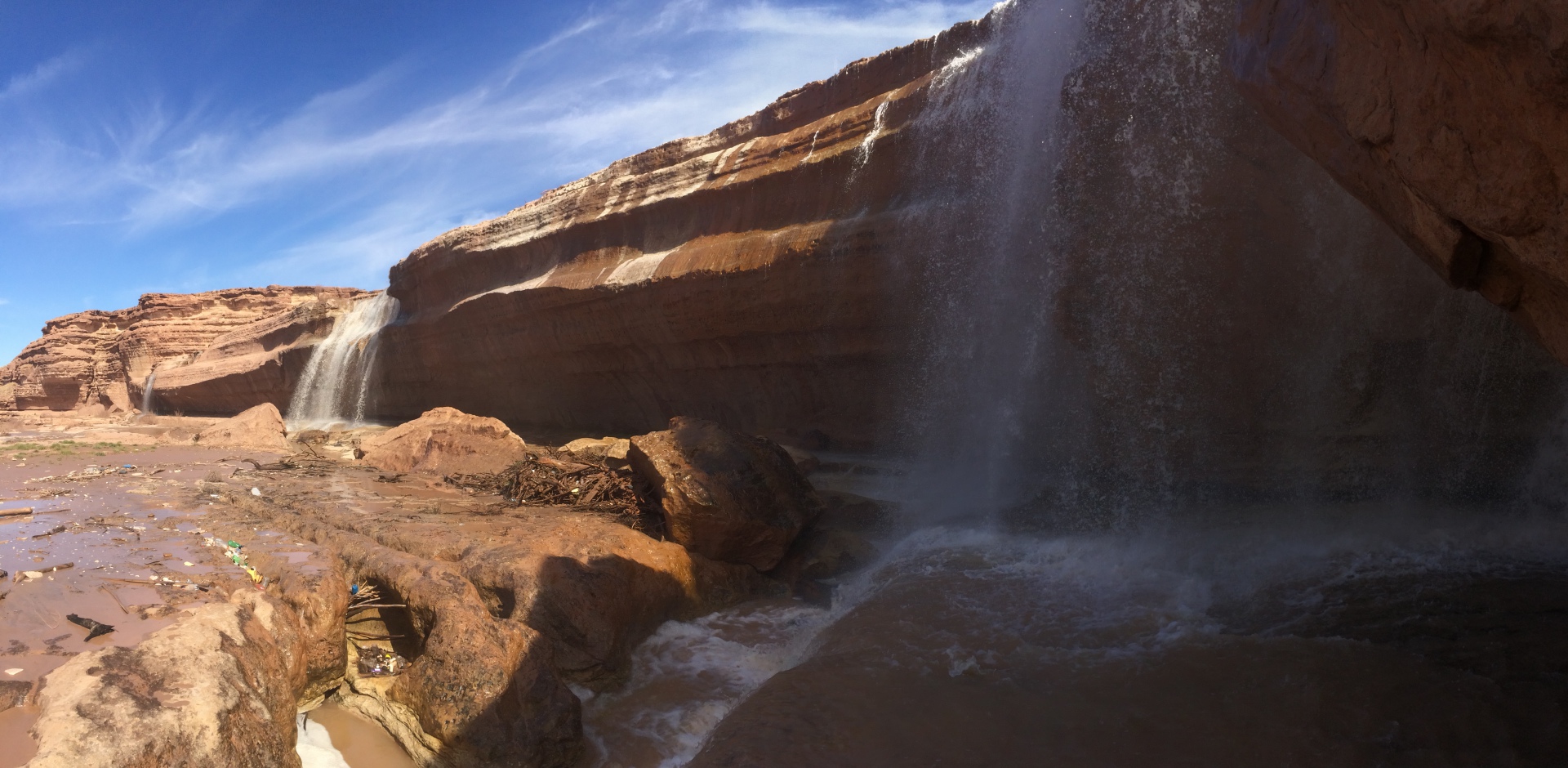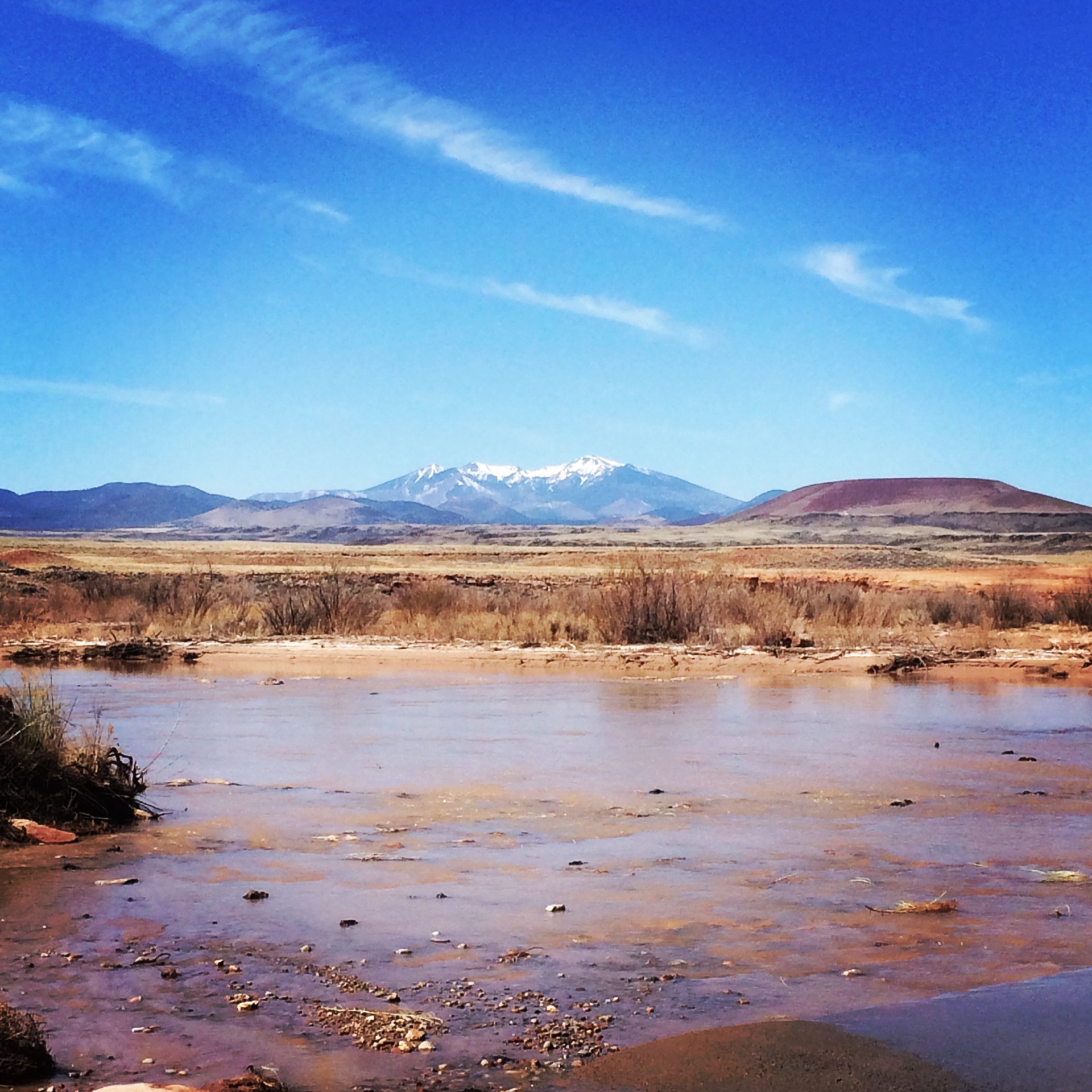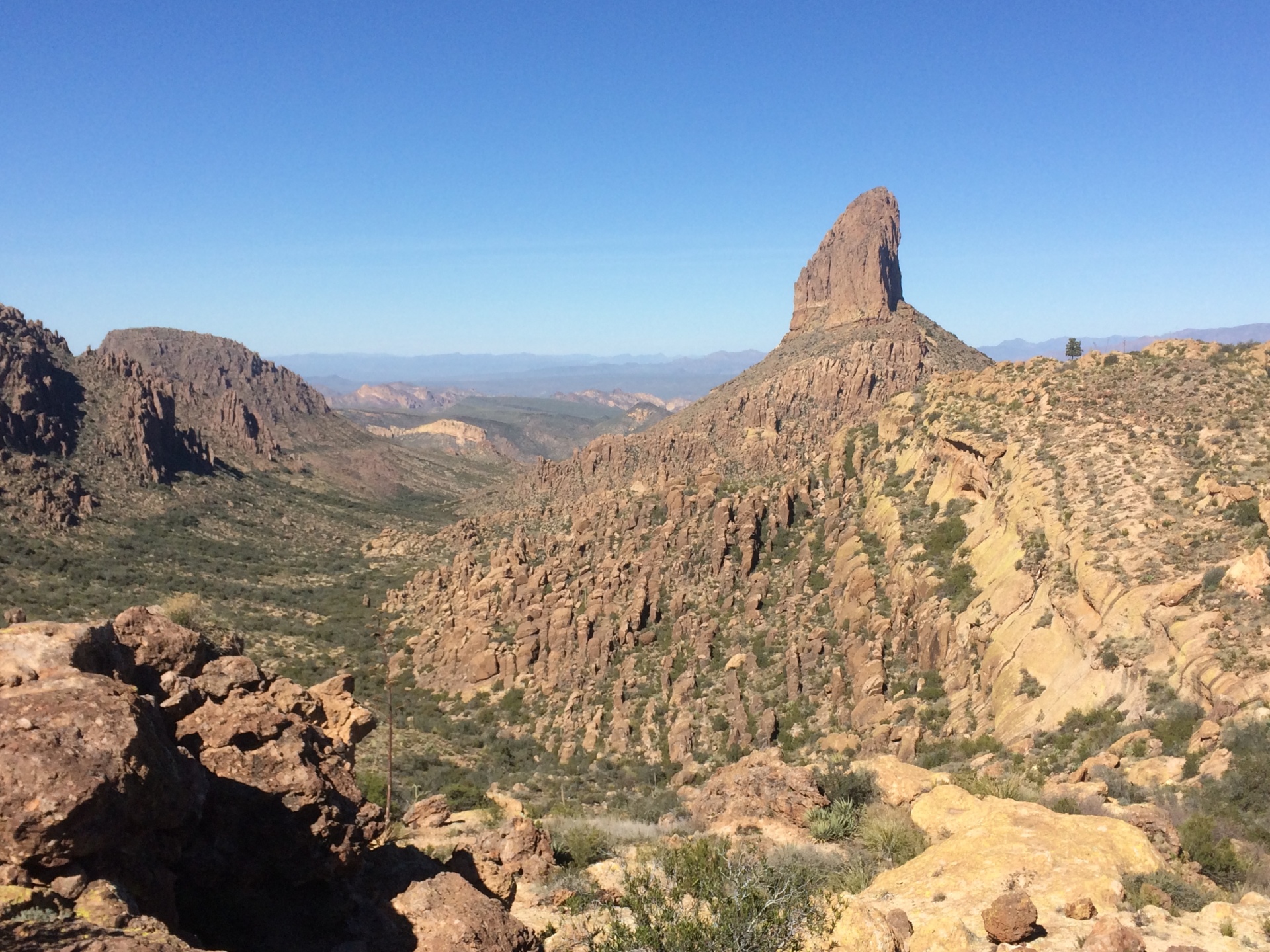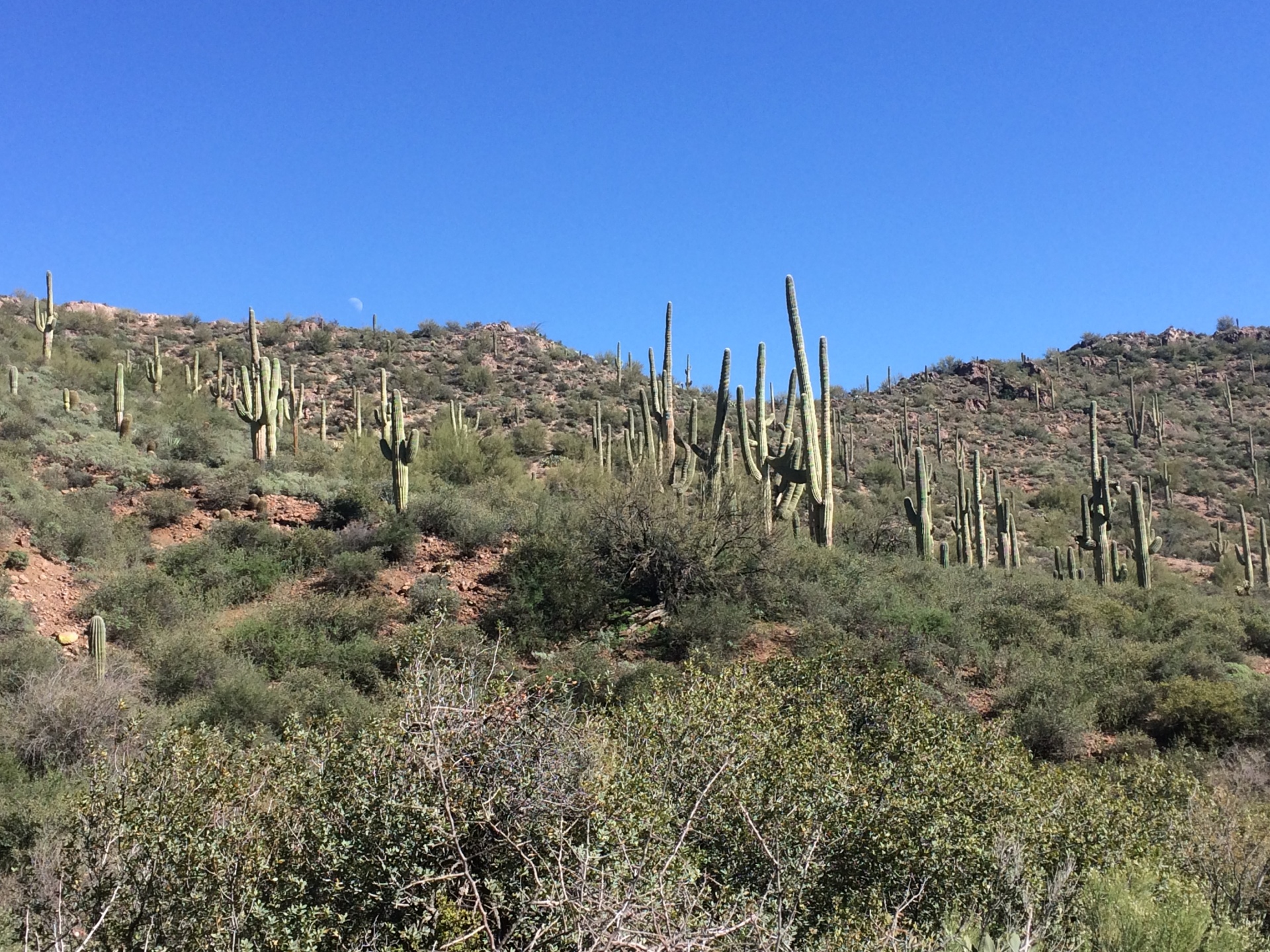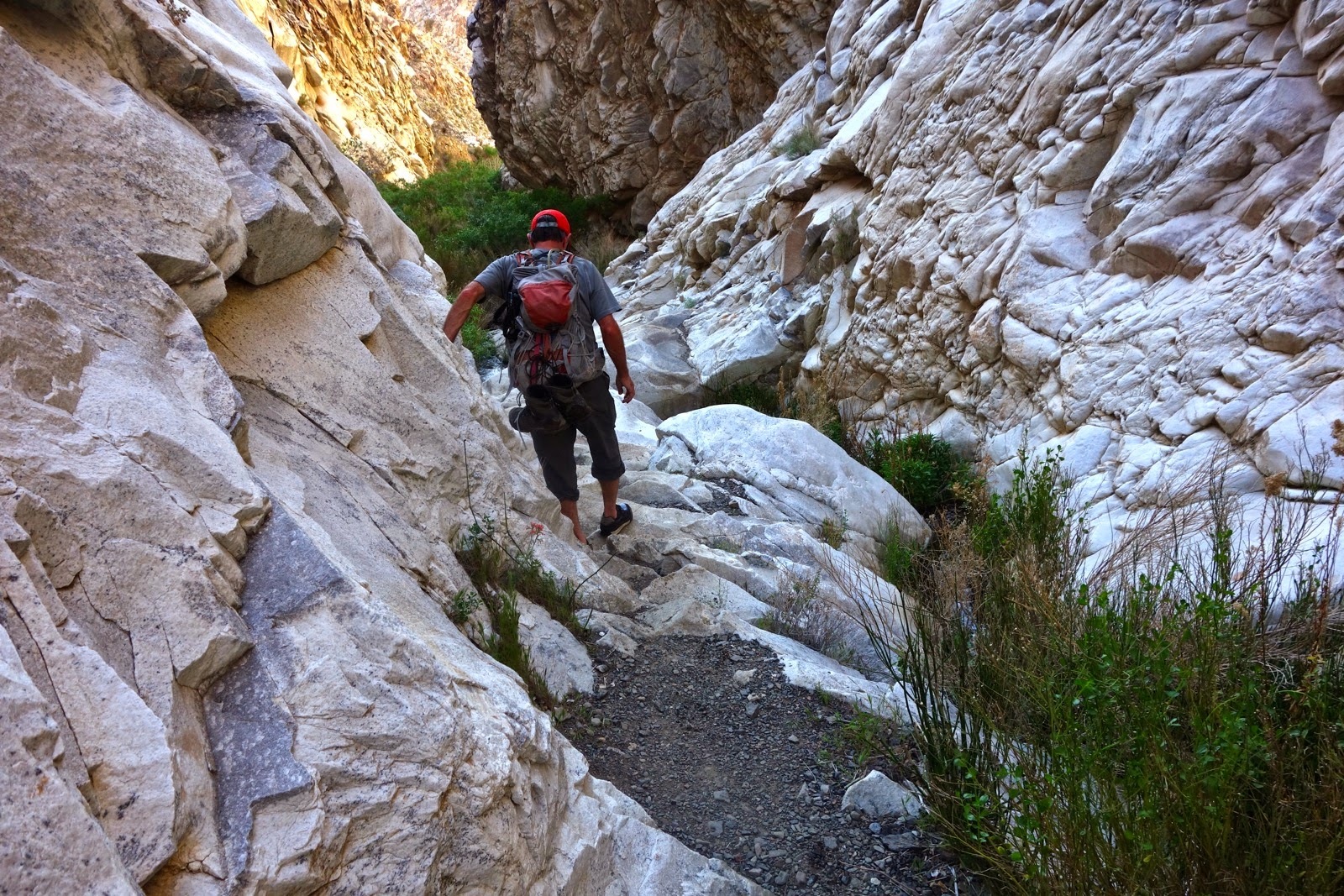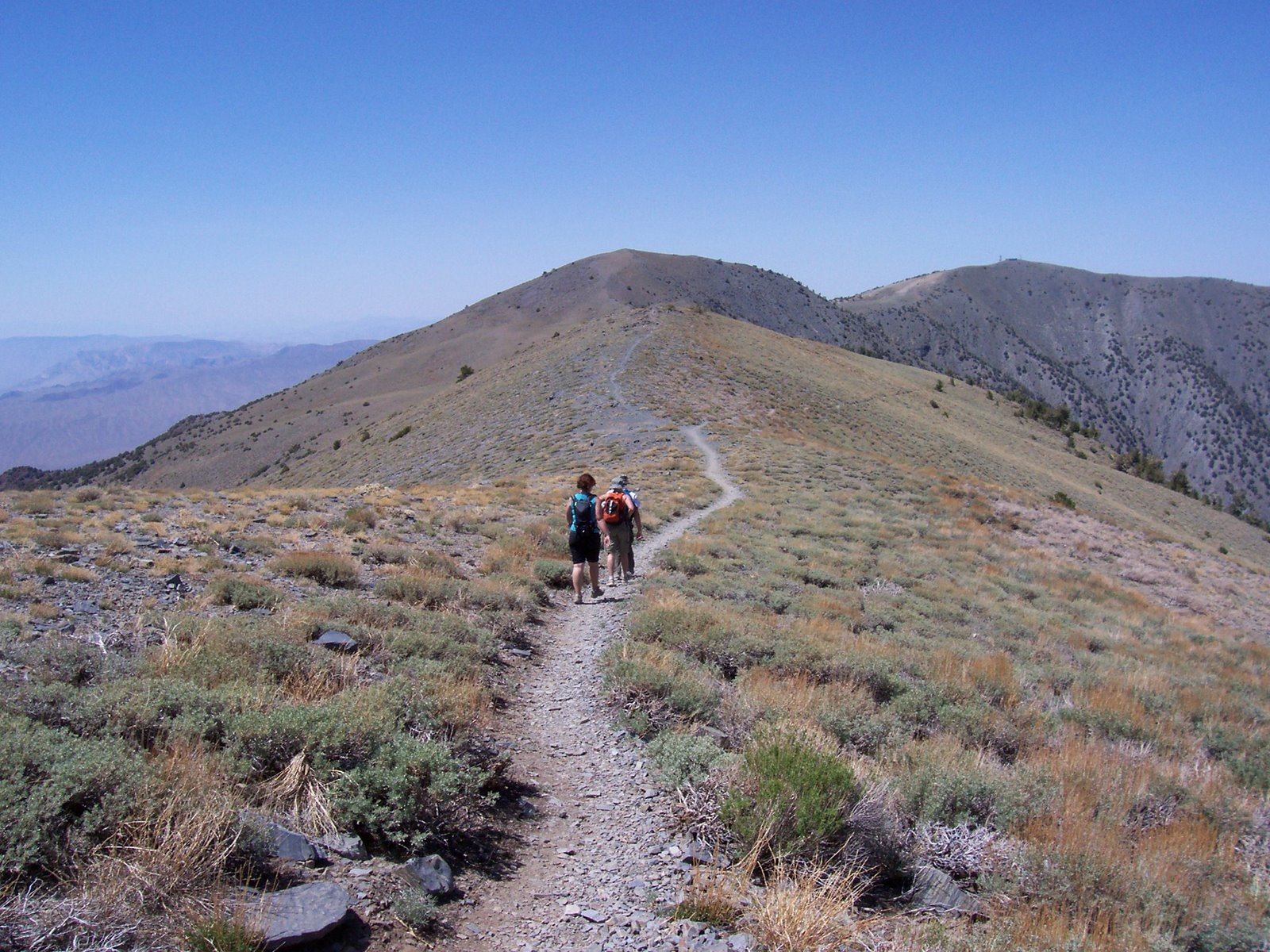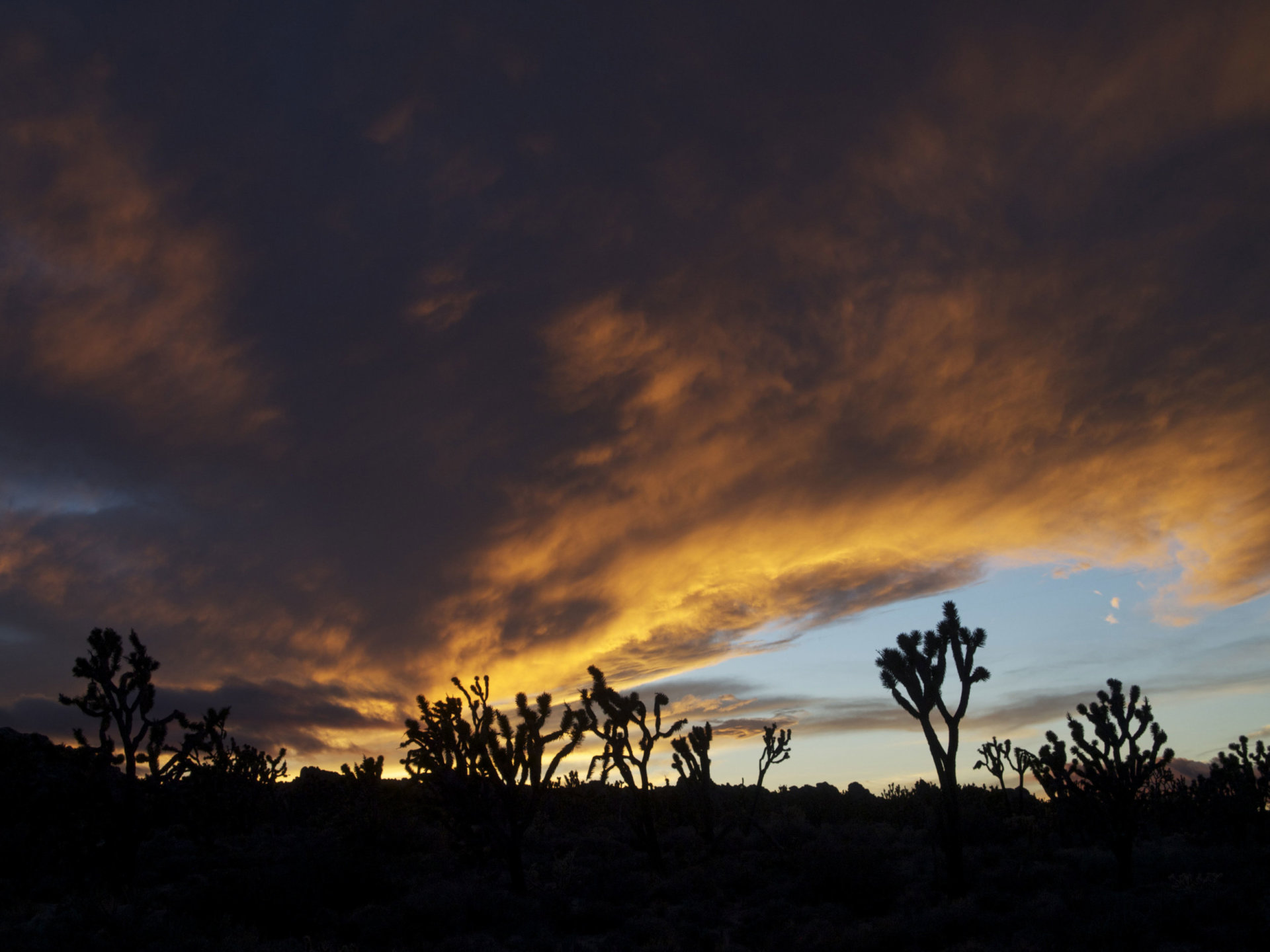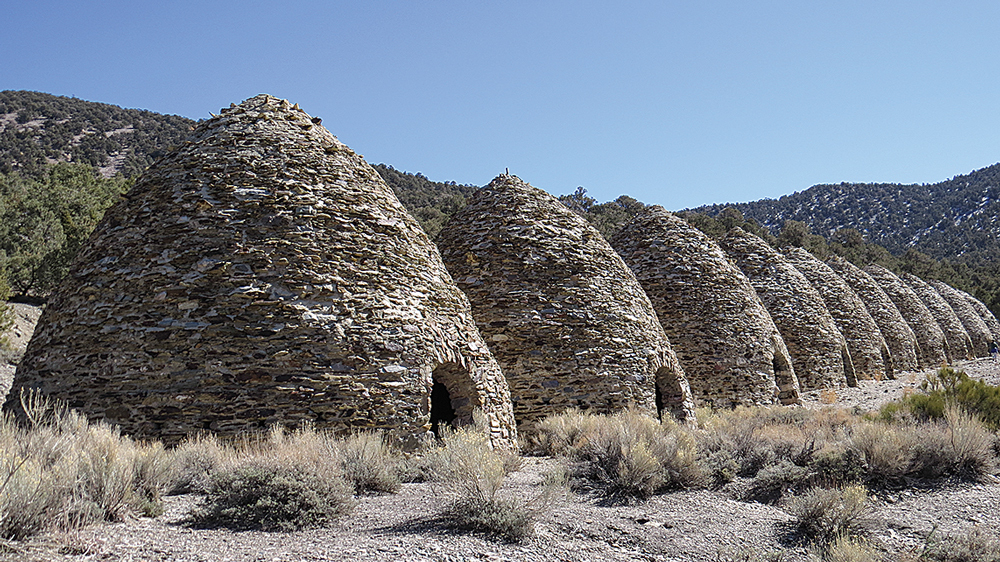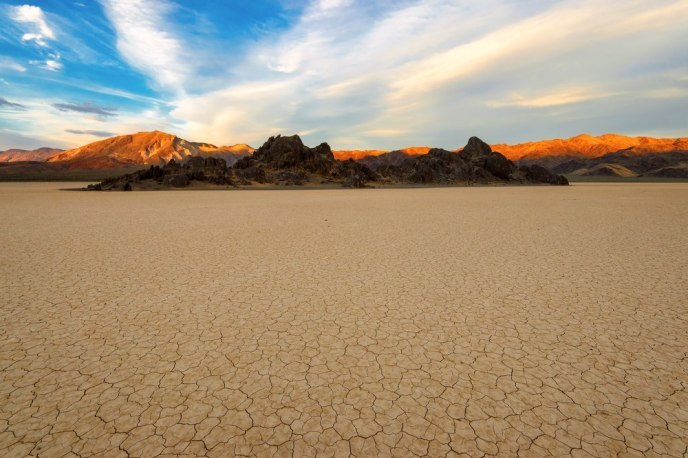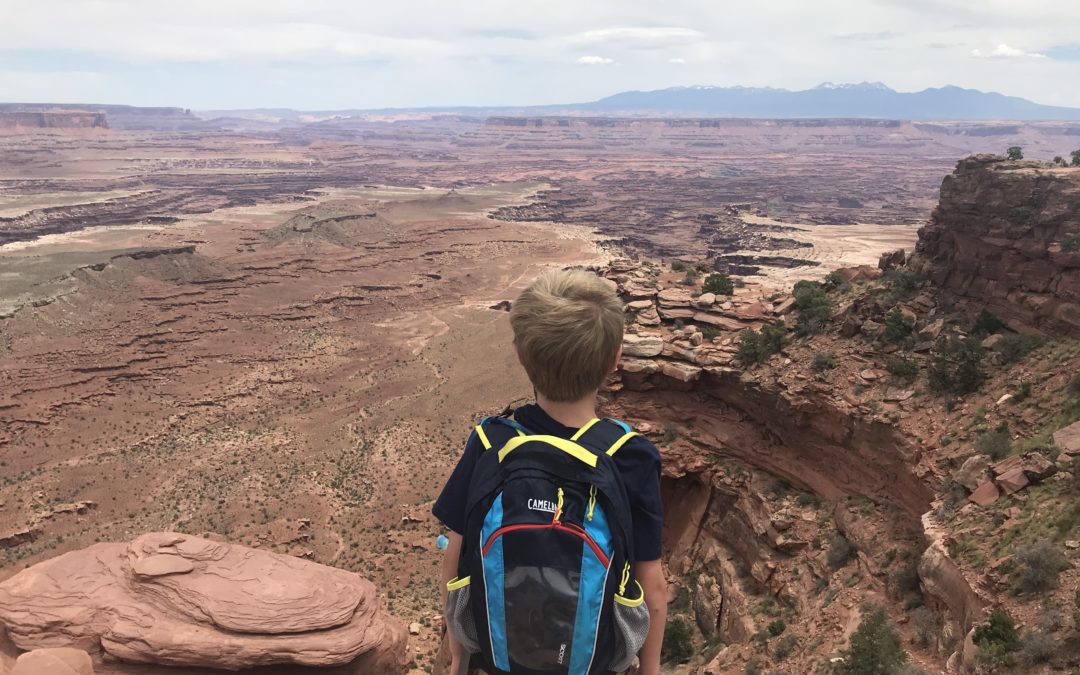
by The Goat | Mar 12, 2020 | Hiking
Inspired by my latest trip up a 12,000ft Mountain
Illuminate, appreciate, breathe deeply
Smell of strong coffee wafting
Silent contemplation, sipping cool air and hot liquid
Time stays timeless, one foot in front of another
White Aspen cut the Black Darkness, standing sentinel
pink, purple, blue streaks painted by the unseen sun as the stars give way
Mind sharpening, senses dulling, come back
Jagged rocks, dampening socks, ropes through belays
Fear is my companion, Adrenaline is my mistress
False, always another, always over the horizon
Listen, look, sun above me, clouds below me, a vast canvas stretching
Muscles aching, mind longing, heart pounding, feet never stop
Looking back to see the beast
Something accomplished, to say the least
Every day will now feel sweeter
Every moment will pass completer
Do not relent, Do not give in
Until the mountain calls from within
This poem was constructed as the crew and a few of our beloved guests climbed Humphrey’s Peak, the high point in the state of Arizona at 12,635ft above sea level. As a former volcano, it is one of the more strenuous, rewarding climbs one can do in our beautiful state. We hope you enjoyed The Goat’s original work, and we hope that it inspires you to climb your own mountain!
May The Goat be always with you
by The Goat | Mar 12, 2020 | Geology, Hiking, Rock Talks
Arizona’s Superstition Mountains: Lost Gold and Sweet Hiking
Celebrated as perhaps the premier wilderness area within an hour of a metropolitan area, the Superstition Mountains boast flawless beauty, fabulous geology, and epic hiking and adventure opportunity. However, their most supreme treasures lie in legend, alluring, mysterious, and intriguing legend that beg of exploration both physical and mental.
Here in these mountains lies potentially the most wealthy, vast, and extraordinary mining discovery in Arizona (and perhaps the entire Old West), which of course was legendary in and of itself for the mining discoveries that led to the rapid Western Expansion of the mid-to-late 1800’s. This legend entwines geology and mystery, and just may be the West’s final and greatest secret: The Lost Dutchman Gold Mine.
History of the Superstition Mountains
Situated northeast of present-day Phoenix, the Superstition Mountains have long offered respite, shelter, and resources to those looking. Long before the herds of European settlers headed west, many of them streaming into southwest’s boomtowns of lore such as Tombstone, Bisbee, Jerome, and Goldfield, the Hohokam and Salado Puebloans inhabited the area 10,000 to 12,000 years ago, farming, trading, hunting, and building the water canals that laid the framework for 20th century Phoenicians.
After their as-of-yet unexplained migration or disappearance from the region, the Sonoran Desert saw many generations of explorers, prospectors, and Native American tribes pass through. The Spanish, led by Marcos de Niza, passed through here in search of riches and the promised-land in the early late 16th and 17th centuries.
Their descendants in the newly independent Mexico roamed the land thereafter, trading and prospering with the newly-founded United States of America in the late 1700’s when Arizona was officially part of Mexico.
Settlers of the Superstition Mountains
After the Mexican-American War and the Gadsden Purchase of 1848, Arizona became part of the United States, and along with it the beautiful Superstition Mountains. The Superstitions, however, remained fiercely-guarded Apache Territory until Geronimo’s surrender in 1886, though some rugged individuals did make this area their home.
Among these rugged individuals was a man named Jakob Waltz, a German immigrant who had prospected all over the west including California and several areas of Arizona such as Prescott, where he was documented in various census reports.
He claimed a homestead north of the Salt River in 1868, and according to folks in the area, prospected almost daily in the area until the great Phoenix flood of 1891 drove him from his land. He died that same year in the home of a close friend, to whom he is said to have divulged the location of a gold mine, the likes of which nobody had ever seen.
The location, given in riddle-like clues, has attracted treasure-hunters and dreamers for over a century now, and the legend of the Lost Dutchman Gold Mine is as popular a story as it has ever been among those who love this wonderful area.
How did the Superstition Mountains form?
Geologically-speaking, the Superstition Mountains are evidence of a monstrous volcanic explosion that took place roughly 30 million years ago. What we (geologists) typically find in this area are welded tuffs (compacted volcanic ash).
The tuff found in the Superstitions indicates a gas content that could only occur in the most violent of eruptions, and the level of welding in the tuff backs this up with the temperatures that would have to be necessary to create this kind of rock.
Long story short, the eruption that created this fantastically scenic landscape is, in geologic terms, not a place where one would typically expect a gold mine of any kind to be present, much less one that produces the kind of ore that Mr. Waltz purported to have stashed here.
More Rock Talks
New studies indicate that an intrusive batholith may underlie the Superstitions, and intrusions are where gold, silver, copper, and other valuable ores are typically located, as they are formed in the hydrothermal activity that is prevalent in these intrusions (magma cooling underground close to the surface, i.e. granite).
So, it may be possible that Mr. Waltz’s bonanza is the product of this intrusion, and therefore deep underground that ban be accessed only by cave or canyon. This location is belied by some of the cryptic clues he gave to his friend on his deathbed, so the legend may yet be true.
Indeed, the resurrected ghost town of Goldfield just 20 miles to the west of the Superstition Mountains known the west over for its high-grade gold ore, was a place where gold was discovered, mined, and profited from. Goldfield is geologic proof that gold does, in fact, exist in the general area even though the play petered out quite quickly.
The Lost Dutchman’s Gold Mine
There are many questions that still exist as to the Lost Dutchman’s Gold Mine: namely, where is it? Did it really exist? Was it simply a story to promote tourism in the area, of which Mr. Waltz’s friends certainly profited by? If Jakob Waltz’s gold was real, and some have testified that it certainly is, was it mined?
Or perhaps was it the lost stash of the Peralta family, before they were massacred by Apaches? Maybe is was an Apache stash before they were massacred by miners?
Evidence may suggest that either the Peraltas, a Mexican family for which a trail in the Superstition Wilderness is named, or the Apaches had struck bonanza gold just four miles from present-day Apache Junction, then hid it deep in the Superstition Mountains before they met an untimely end.
Whatever the real story, the legend of The Lost Dutchman Gold Mine and the Superstition Mountains attract thousands of curious visitors, avid hikers, and metaphorical treasure hunters year after year. Just to be in this outstanding wilderness area is to be surrounded by beauty, mystery, history, and the geology that is the foundation for it all.
Call us for more information about hiking in the Superstition Mountains, or enjoy this wilderness with one of our outstanding geologist/guides who will take you to the secret spots and let you in on the wondrous mysteries that surround the fabulous Superstition Mountains!
May The Goat be always with you
by The Goat | Mar 12, 2020 | Backpacking, Death Valley, Geology, Hiking, National Parks
Death Valley: 10 Cool Facts at 134 Degrees
There is a place so vast, so beautiful, so unique, and so special that it nearly defies comprehension. This is Death Valley. Located in the howling wilds of the Mojave Desert along the border of California and Nevada, Death Valley is at the same time magnificent and overwhelming in sheer size, beauty, and adventure opportunity. In our opinion, it is world-famous for all the wrong reasons. When most think of Death Valley, they think of it being the place where the hottest temperature on Earth was recorded; 134 degrees Fahrenheit to be exact on July 10, 1913. Even the name itself conjures up images of things literally bursting into flames; a place that is at the least not enjoyable, and at the worst, the terrestrial version of The Inferno.
While Death Valley itself does hold that distinction, the surrounding areas are quite pleasant during the summer months, and see up to feet of snow in the winter. The Goat aims to shed some new light on this wondrous, mysterious, gorgeous, and astonishing area, and he has put together his very best “Did You Know?” list about Death Valley!
1. Did you know that the vertical distance between the lowest and highest points in Death Valley is over 11,000 feet?
Telescope Peak, the highest peak in the Panamint Mountains that tower over Death Valley, is 11,049 feet above sea level. Its lofty peak is less than 15 miles away from the lowest point in North America, Badwater Basin at 282 feet below sea level. This nearly incomprehensible juxtaposition is a feat that is only accomplished by the complex tectonics and unique geology that govern Death Valley’s highs and lows.
2. Did you know that Death Valley should really be called “Life Valley?”
Death Valley National Park is home to numerous lizard and reptile species, bighorn sheep, antelope, snakes, Gila monsters, mountain lions, coyotes, foxes, several species of owl, rodents, and hundreds of plant and tree species including cottonwood, oak, Joshua trees, and various pines, as well as many species of cactus. The perception that it is a barren, lifeless desert could not be further from reality, as it houses one of the greatest biologically diverse ecosystems in the world.
3. Did you know that you can play golf then soak in hot springs in Death Valley?
You and the Devil. Furnace Creek Golf Club boasts a full 18-hole course that challenges golfers of all levels, and the Devil’s Golf Course is one of the most excellent salt flats in the world. Visitors to Death Valley can easily see both in a day, so get ready to dance with the Devil! After dancing, feel free to soak luxuriously in Furnace Creek Hot Springs, the park’s developed and fantastically rejuvenating hot natural hot spring.
4. Did you know that Death Valley is the largest National Park in the contiguous 48?
At 3.4 million acres, it dwarfs many of our National Parks including Grand Canyon, Yosemite, and even Yellowstone in sheer size. In fact, Grand Canyon and Yellowstone together would fit inside Death Valley!
5. Did you know that one of Earth’s rarest species exists in Death Valley?
The Devil’s Hole Pupfish, one of the most rare and beautiful species of fish in the world, exists in Death Valley and only Death Valley. In fact, the park is home to several species that are not just indigenous, but exist here almost exclusively.
6. Did you know that Mt. Whitney is in the next mountain range over?
Mt. Whitney, the highest peak in the contiguous 48 states at 14,465 feet above sea level, lies in the Sierra Nevada just west of Death Valley. This means that the highest and lowest points in the lower 48 are less than 100 miles apart!
7. Did you know that in 1929, not a single drop of rain fell in Death Valley?
Yep, not one. Death Valley is the driest place in North America, averaging less than 5 inches of rain per year. The howling deserts of places like Arizona and even the Sahara Desert of Africa average more, making Death Valley one of the driest places on the globe.
8. Did you know that Death Valley is home to some of the best-preserved human history sites in the Unites States?
Both modern and ancient history are on fabulous display here in Death Valley. Archaeological evidence dates back to over 9,000 years ago, as petroglyphs and various Puebloan artifacts can be found all over the park. In addition, the Timbisha Shoshone Native American Tribe has called Death Valley home for over 1,000 years. There is colorful mining and European history here as well, as Death Valley got its name from frustrated and thirsty prospectors in 1848. There are numerous well-preserved mining claims and historical artifacts, and even a wickedly cool ghost town! (Check out our Surprise Canyon Backpacking Tour)
9. Did you know Death Valley is a favorite for Hollywood movie sets?
Dozens of scenes from Star Wars have been filmed in Death Valley, including Artist’s Palette (the Sandcrawler scene from Star Wars Episode IV: A New Hope), Golden Canyon (Jawa scenes from Star Wars Episode IV: A New Hope) and Mesquite Flat Sand Dunes (Droid scenes from Star Wars Episode IV: A New Hope). Also, cult classic film Tremors was filmed in the Owens Valley just one range over, and many of the shots in this excellent movie gaze onto the west side of the Panamint Mountains. Check out The Goat’s Geology Blogto learn more about Tremors and other great geology movies!
10. Did you know that Death Valley has some of the most outrageous geology in the world?
The geologic display in Death Valley is nothing short of astonishing. Home to three major faults, Death Valley is a wild melange of nearly-billion year-old sediments (very rare), contorted metamorphics, twisted volcanics, and more mineralization and hydrothermal staining than you could shake a geologic hammer at. A quintessential example of the extensional tectonics that have created the Basin and Range Province, Death Valley is not to be missed by the geologist child in all of us.
Bonus: Did you know that Death Valley can be a great place in all seasons (even summer)?
You read that right; all seasons, even summer. Crazy? Ridiculous? Suicidal? Nope, just the truth. The Panamint Mountains, which reach to over 11,000 feet, stay cool even as the summer heat blisters the valley below. This is a perfect time to summit many of Death Valley’s most lofty peaks, including Telescope Peak, it’s highest point.
Blue Marble Adventure GeoTourism is ecstatic to be rolling out our guided Death Valley hiking tours! Let our geologist/guides show you the wonder and whimsy of one of the most fantastically outrageous places on the face of the Earth. You’ll be glad you got past the name and into the wild!
May The Goat be always with you
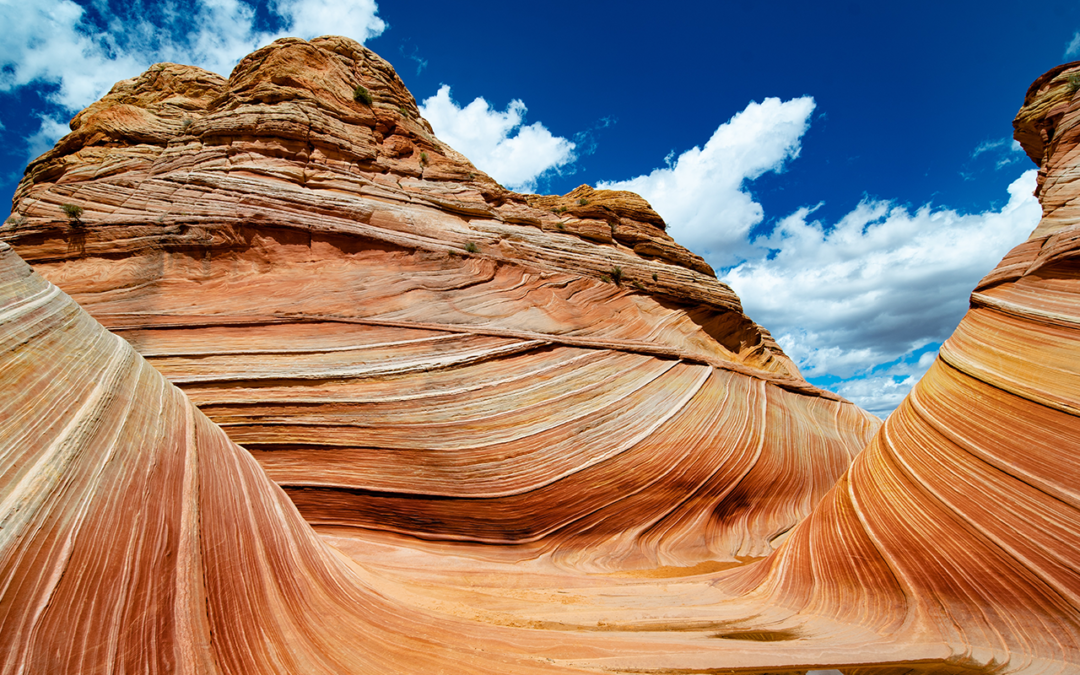
by The Goat | Aug 27, 2019 | Hiking, Permits, The Wave, Vermillion Cliffs
How Do I Win the Wave Lottery?
It is called “The Hardest Permit to Get in the USA” by Outside and Backpacker Magazines. Your chances stand at roughly 3% on any given day. People enter month after month for, in some cases, years before winning (if they ever do). No doubt that The Wave of the Vermillion Cliffs in Arizona is one of the most sought-after destinations in the southwest, and the BLM’s daily quota of just 20 visitors makes it a tough proposition. Is there a strategy that can be employed to increase your chances? We sent The Goat out to do a hard target investigation. This is what he found:
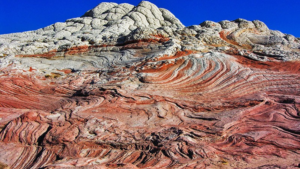
The Setup
In order to lend ourselves the best chances, we started by pegging dates that were during the week. We decided on having an average group size (4), and picking presumably less-popular times of the year. We divided our applications between the online lottery and the in-person lottery. The in-person lottery is held daily at the BLM office in Kanab, Utah. We had all four people in our “group” apply online, and sent one of our group to the in-person lottery. Our goal was to employ a “blanket” strategy to best monopolize our potential chances. We could also properly calculate what, if any, our success rate might be. Over the course of two months, we employed this strategy following these criteria, and logged our failures and successes.
The Online Lottery
The Wave’s online lottery is where this permit gets it ornery reputation. With the in-person lottery being highly inconvenient for the vast majority of applicants, this lottery is not far from playing the Powerball Jackpot and hoping to win even a modest prize. The BLM splits permits 10/10 for the online and in-person for 20 people each day, so you can imagine what your odds might be. It’s like elbowing through throngs of crazed teenage girls at an NSYNC concert circa 1997. To play this game of chance visit the BLM’s Wave Permit Page.
The In-Person Lottery
The Wave’s in-person lottery, though inconvenient for most, can give the applicant a slightly better chance. For our purposes, we camped near the BLM office and tried to be the first to the door at opening time (8:30am, 7 days a week). In-person permits are typically offered for the next day, although if permits were not filled they may issue you one for the same day.
Kanab Visitor Center in Kanab, UT 745 US-89, Kanab, UT 84741
Playing the Odds
Our success rate at the conclusion of our experiment was quite low, as expected, for the online lottery. Given the cost of the permit ($7/person if you win, with a non-refundable $5 application fee for each application), and the low chances of winning, this strategy is not so much a strategy as a commitment. We spent nearly $500 and obtained two permits for middle-of-the-week in late November, and one in early February. Our final odds of winning, given our failure vs. success rate was a paltry 10%. (20 application, 2 permits).
Though this is higher than the national average, this was our own success rate and not measured against all other applicants. We imagine that the advertised 4% success rate is perhaps even slightly higher than actual. That being said, the thrill of victory is tangible in the face of numerous defeats. Our testers literally cheered and danced when permits were issued. Worth the sacrifice!
On the flip side, the In-Person lottery yielded excellent success. Our employed strategy of having a camper near the BLM office paid off nearly 100% of the time. In fact, the only time it was not successful was when our camper slept through his alarm and ended up being buried in line. The trick to the in-person permit is this: one person may apply for one permit, regardless of group size (up to 10). For example, only three people may apply, but they may each have parties of 4 or more, meaning that only two groups would be successful, and only two people from the remaining group would be issued a permit. For fairness purposes, we gave our permits to those who were behind us. Pay it forward!
The Goat’s Conclusion
Hiking The Wave is a must for anyone interested in wild scenery, challenge, photography, and of course geology. Though winning a permit through The Wave lottery can be an adventure in and of itself, it is highly advisable to take the plunge. Persistence, perseverance, realistic expectations, and a disciplined system with a set budget will pay off eventually. If at all possible, the in-person lottery is absolutely the way to go. But, if this is not a possibility for you at all, you must bear the challenge of the online lottery, which even when employed with a strategy can be difficult to win.
How You Can Apply for Permits to The Wave
Permits to Coyote Buttes North (The Wave) and South are issued by lottery, both online and in-person as discussed. For Coyote Buttes North, the cost is $7/person on the permit, and for Coyote Buttes South the cost is $5/person. For other parts of the Vermillion Cliffs National Monument, as well as the Paria Canyon-Vermillion Cliffs Wilderness just to the north, permits are free and supplied at the trailheads of Wire Pass, White House, and for other areas such as White Pocket. Any overnight stay requires a backcountry permit, obtained either at the trailhead or the Kanab Visitor Center. Be advised there is no overnight camping allowed in the Coyote Buttes permit area.
Permits to The Wave can be applied for four months in advance of your requested date. You have an entire month to apply, and you can apply for up to three entry dates per application. If you are successful you will be authorized for one of the days. There is a non-refundable $5 fee to apply, and you will be notified of the first of the month via e-mail whether or not your application was successful.
Example
Let’s say you wanted to visit Coyote Buttes North (The Wave) in April. Here is the procedure you would follow.
1. Go to the Permit Page between Dec. 1 and Dec. 31.
2. Follow the directions, choosing up to three possible entry dates. If successful, you will only be authorized one date.
3. You will be notified via e-mail the first day in January whether your lottery application was successful or not.
4. After being notified, you will have 14 calendar days to pay for your permit. You can pay online with your credit card. Your e-mail notification will contain a link to a secure web page, where you can go to pay and submit the remainder of your trip information.
5. Your permit will be mailed to you four to six weeks after you have paid your fees, unless you chose the option to pick it up in Kanab, St. George, or the Paria Contact Station when you filled out your permit application.
The way the lottery works essentially nullifies any attempt to be an “early bird gets the worm” type of situation, and you have as good of a chance of winning the lottery regardless of your application date or time. Applications received in the month of April, for example, have equal chances of being selected for permits issued in August regardless of what day in April the application was received by the BLM.
Rules and Regulations
From time to time, people will ask us “can I go to The Wave without a permit?” The answer here is simply, NO. Your permit must be displayed visibly on your pack/person at all times, must account for all people in your group, be paid in full, and for the dates displayed on the permit. Violation of any of these will result in immediate ejection from Coyote Buttes, and a $1200/person fine. Multiple violations can result in lifetime bans, and even federal criminal trespassing charges. But what are the chances you’ll be caught in such a remote place? The Wave, while remote in terms of general ideal, is very popular and highly regulated.
The BLM devotes quite a bit of time and resources to The Wave for safety, environmental study, and conservation purposes. Though they are not “out to get you”, they will enforce regulations. The chances of having your hiking party interact with a BLM Ranger in the Coyote Buttes area is almost 100%. Please, please go through the permitting process. The more people that violate the regulations may result in stricter rules, less permits, and even a shutdown of the area altogether.
Safety and Transportation
Located adjacent to highway 89A near the Arizona/Utah border, The Vermillion Cliffs National Monument is one of the most spectacular, wild, and unspoiled places in the American Southwest. Consequently, it is a rugged place that can be difficult to navigate. Do not even consider visiting The Wave, or any other part of Vermillion Cliffs without 4WD (AWD is NOT 4WD), several detailed maps, a compass, GPS (not in-dash), and plenty of water. If heading to White Pocket or Coyote Buttes, be prepared to drive in sand, which can be very challenging if you have not done it before. Many a truck have been lampooned in the sands of Vermillion Cliffs.
Going Guided
So you’ve won the lottery, great job! Now you need to get there and enjoy this once-in-a-lifetime opportunity to its fullest extent. A guide can be an invaluable resource in a place like this, and there a no better than the geologist/guides of Blue Marble Adventure GeoTourism. We will help you plan your visit from start to finish and ensure that you see all the highlights of Vermillion Cliffs (more than just The Wave). After your epic adventure we get you back safe and sound, and guarantee an intensely special and memorable experience.
The Final Word
Everybody wants to go to The Wave and The Wave is absolutely worth the visit. It’s a right of passage for many world travelers and backcountry adventurers. However, the lottery and regulations can make it tough to see, particularly if the online lottery is your only possibility. Coyote Buttes South permits are somewhat easier permits to obtain, and still works on the calendar system, giving you the possibility of specifically choosing a date. Your chances are much higher (like 25% higher), and Coyote Buttes South has some astounding and gorgeous scenery.
White Pocket also is among the most fabulous places in the Southwest, and regarded by some as even more spectacular than The Wave and Coyote Buttes North. It only requires a day permit and has no lottery, making it highly accessible. Other areas of the Vermillion Cliffs such as Paria Canyon and the Buckskin Gulch are among the most excellent canyons in the world, with Buckskin Gulch in particular being regarded as the longest, deepest slot in the world. Whatever your choice, rest assured that just because you didn’t score that permit to The Wave you won’t be missing out on some of the best the American Southwest has to offer.
Going Guided
Hiking and exploring Vermillion Cliffs and The Wave is a special experience. Although it is possible to see these places yourself, hiring a guide is a great idea. For instance, guiding services provide logistical support, and plan everything for your best possible trip. They provide a great safety net on the trail, and are trained in backcountry medicine. Above all, they provide a depth of knowledge of the region that turns a walk into a true adventure.
Blue Marble Adventure GeoTourism provides all of the support you need, and pairs that with expert geologist/guides. Our backcountry meals use fresh ingredients, and are planned by a professional chef. Furthermore, we provide top-of-the-line gear and passion for the places we explore. In conclusion, you can visit wild places, but going with a guide can create an even more memorable experience. Don’t be shy, and call us!
Read our blog!
For adventure hiking vacations in a geologic time machine, see our epic tours in Grand Canyon, Utah, and Arizona!
For geological musings read The Goat’s geology blog.
Follow us on Facebookand Instagram
Explore Further, Be Wild, See Through Time — Blue Marble Adventure GeoTourism

